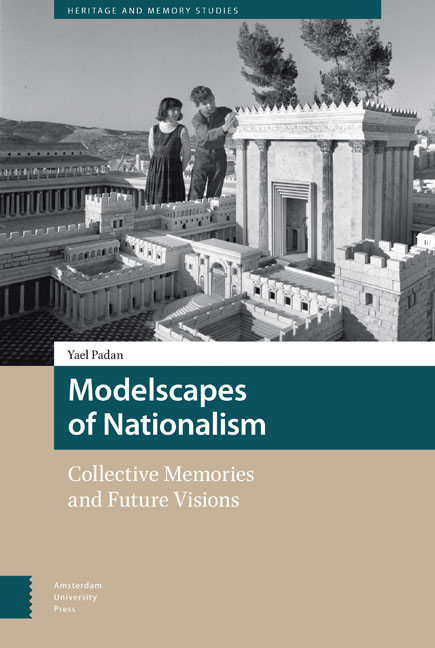Book contents
- Frontmatter
- Dedication
- Contents
- List of Illustrations
- Preface
- Introduction: Narratives into Objects, Objects into Narratives
- 1 The Qualities of Modelscapes
- 2 Models and Modern Perceptions of Nationalism
- 3 The Second Temple Model
- 4 Mini Israel
- 5 The Valley of the Communities
- Conclusions
- Bibliography
- Index
1 - The Qualities of Modelscapes
Published online by Cambridge University Press: 12 February 2021
- Frontmatter
- Dedication
- Contents
- List of Illustrations
- Preface
- Introduction: Narratives into Objects, Objects into Narratives
- 1 The Qualities of Modelscapes
- 2 Models and Modern Perceptions of Nationalism
- 3 The Second Temple Model
- 4 Mini Israel
- 5 The Valley of the Communities
- Conclusions
- Bibliography
- Index
Summary
In this chapter some basic characteristics of models will be explored. My focus is on public spatial models which I have defined as modelscapes, referring to meaningful constellations of individual architectural models that are exhibited to the public. I will examine in what respects modelscapes are unique modes of representation, which differ from other forms such as texts and two dimensional objects.
My aim is to identify the features that characterise modelscapes and make them unique. I begin by examining modelscapes as objects that occupy a physical space, which stands in some relationship to an actually existing space beyond the modelscape. What is the relationship between a modelscape and the external objects to which it refers? The models I am interested in are representations of the built environment, representing mostly architecture. However, they differ considerably from their source objects. I analyse this difference in order to determine how models, as objects or artefacts, relate to architecture.
Another important feature of modelscapes which differentiates them from other modes of representation is the use of scale. Many modelscapes are miniatures, and thus position their visitors in a powerful position, quite different from the experience the visitor would have at the exterior site which the modelscape represents. The question of alterations in scale is also relevant for examining modelscapes which are not miniaturized, for example, real-size replicas of buildings in World Expositions, which nevertheless participate in a miniature representation of the world itself.
Modelscapes are one of the manners of representation which are both an outcome and a reflection of modern modes of perception. I base this argument on an examination of the historical emergence of modern modes of vision and concepts of time and space. Modernity is characterized by a cognitive separation between viewers and viewed. One of the reasons for this was the development of both optical instruments and the perspective system. These placed the subject in a central and powerful position, while the world became a visual experience determined by the viewer. I aim to explore how models and modelcapes are perceived within this visual and cultural framework.
Modelscapes are organized clusters of individual models, and therefore it is important to examine the physical presence of the individual spatial model as well as the effects of grouping models together to create a context, a model environment.
- Type
- Chapter
- Information
- Modelscapes of NationalismCollective Memories and Future Visions, pp. 27 - 56Publisher: Amsterdam University PressPrint publication year: 2017



